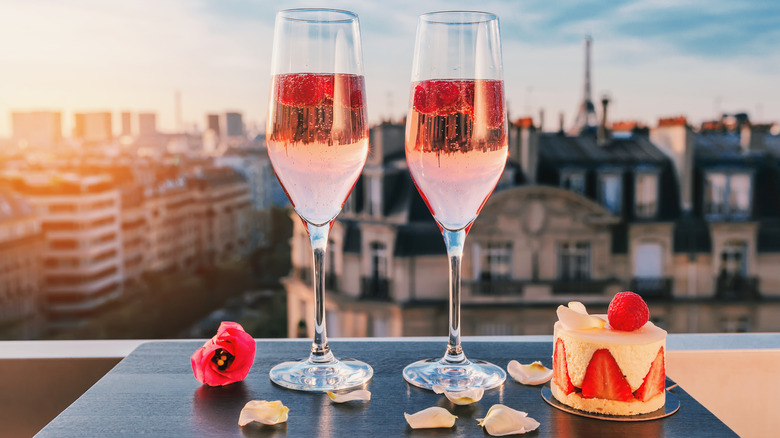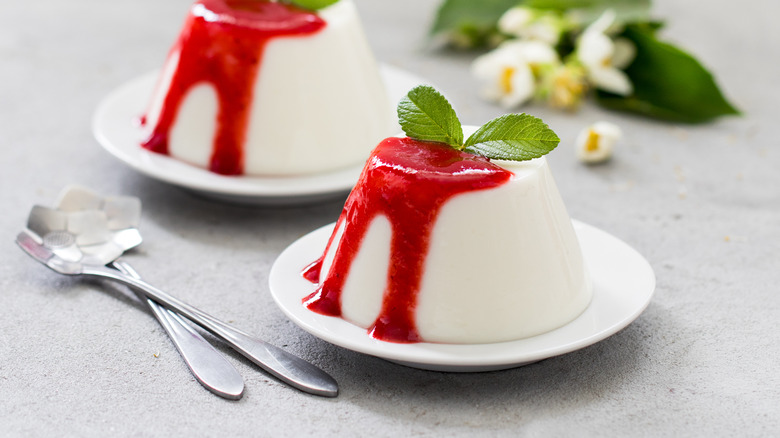The Key To Pairing Dessert With Champagne
Nothing screams celebration quite like Champagne. Often served as an apéritif to whet the palate, glasses of bubbly can also be a great way to end a meal. However, there is a correct way to go about pairing desserts with Champagne.
Not to be confused with crémant (nor cava or prosecco, for that matter), Champagne must always come from France's northern region of the same name and be produced using the Méthode Champenoise to gets its iconic fizz, notes VinePair. Typically made from a blend of three grapes — Chardonnay, Pinot Noir, and Pinot Meunier — Champagne often has a high level of acidity with notes of citrus and a nutty or yeasty quality thanks to its aging process. It can also boast various degrees of sweetness, ranging from Brut Nature with little to no sugar added all the way to Doux, which has more than 50 grams of residual sugar per liter.
Although a flute glass can better showcase the wine's stream of bubbles, this type of stemware limits the ability to properly evaluate aromas. Instead, Town & Country suggests skipping flutes and even overly wide coupe glasses in favor of a simple white wine glass to serve chilled Champagne.
The next step, of course, is understanding how to pair bubbly with sugar-coated courses like dessert.
Choose Champagne that's sweeter than the dessert
Beyond preference, it's wise to think about the main flavor components in a dish and a wine when pairing the two. But, when it comes to desserts, sweetness is also very important to consider. While you can either match flavors or contrast them, since wines that are less sugary than a dessert can taste dull, Decanter shares that the best duos tend to involve pairing a dish that's not overwhelmingly sweet (think: fruits, nuts, and dairy) with a wine that's sweeter.
According to Food & Wine, Demi-Sec Champagne, or half-dry wine, which includes 32 to 50 grams per liter of residual sugar, works especially well with dairy-based desserts like a panna cotta and crème brulée. However, even a cheese course of a creamy Brie or mildly piquant blue can end your dinner on an unforgettable note.
Likewise, matching flavor and weight can also prove successful in pairing desserts with Champagne. Wine & Spirits Magazine recommends pairing a crisp and delicate chardonnay-focused sparkler with a citrus mousse or meringue, whereas a fruity pinot-based bubbly (blanc de noirs or rosé) will fare better with more robust flavors like tart red fruits or dark chocolate.
Which pairing will you serve next for dessert?

